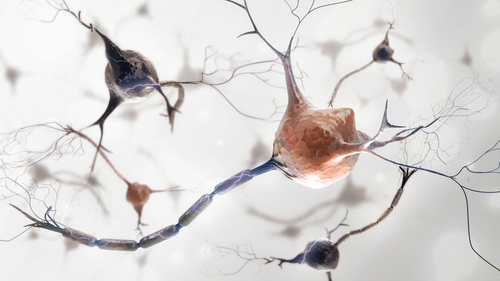Newly Discovered Protein Interaction Sheds Light on ALS Mechanisms, Study Finds

After eight years of research, scientists have finally discovered how TDP-43 and hnRNP A1 — two proteins that have been linked to amyotrophic lateral sclerosis (ALS) — work together to promote the disease.
TDP-43 was found to bind to the hnRNP A1 RNA sequence and promote production of a longer version of the protein. This abnormal protein was not only found to accumulate in nerve cells of ALS patients but to also form toxic aggregates that may contribute to ALS progression.
This newly described TDP-43 and hnRNP A1 interaction will help scientists better understand the mechanisms behind ALS, and may open new therapeutic avenues for treating the disease.
These findings were reported in study, “TDP-43 regulates the alternative splicing of hnRNP A1 to yield an aggregation-prone variant in amyotrophic lateral sclerosis,” published at the journal Brain.
TDP-43 is found to be deregulated in about 97% of all ALS cases and in 45% of frontotemporal dementia (FTD) cases. This strongly suggests that it may contribute to the development of ALS, but its exact role is still unclear. A study had previously shown that TDP-43 alone is not enough to trigger ALS, requiring additional environmental or genetic partners.
A team led by researchers at Université de Montréal in Canada found that ALS patients had increased amounts of a longer version of the hnRNP A1 protein, the so-called hnRNP A1B, in their motor nerve cells, which are the cells that control movement. This abnormal protein accumulation correlated with the levels of dysfunctional TDP-43.
Since TDP-43 is an RNA-binding protein that regulates other proteins’ production, the team decided to further investigate this potential interaction.
Using laboratory cell lines (in vitro models), the team found that the lack or low levels of TDP-43 led to production of hnRNP A1B. In fact, they found that TDP-43 could bind to the hnRNP A1 RNA sequence and trigger a process called alternative splicing. This allowed for cellular machinery to bypass the normal stop signal that prevents production of hnRNP A1B.
When hnRNP A1B accumulated in cells, it formed aggregates similar to the ones seen in ALS cells. The team found that these aggregates were toxic, resulting in a more than fourfold increase in cell death.
These results demonstrate that TDP-43 is critical to prevent abnormal expression of toxic hnRNP A1B proteins. But it also shed light on how TDP-43 dysfunction contributes to ALS disease progression.
“It’s a story of fundamental research about what happens normally in the body’s cells and what changes in the context of ALS,” Jade-Emmanuelle Deshaies, a research associate in neurosciences at the Université de Montréal Hospital Research Centre (CRCHUM) and lead author of the study, said in a press release.
Because hnRNP A1 is also a RNA-binding protein, the team believes its impairment in ALS may contribute to a “broader disruption in RNA metabolism than previously considered.” Acknowledging this RNA metabolism impairment may help “get more understanding of what’s going wrong, and potentially develop a therapy that targets this mechanism,” Christine Vande Velde, PhD, associate professor of neurosciences at the Université de Montréal and senior author of the study, said.
Further studies are needed to fully understand the impact of hnRNP A1 and hnRNP A1B in ALS.






